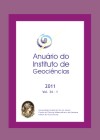Abundance of Sea Psamic Cyanobacteria from Flexeiras Beach, Rio de Janeiro State, Southeastern Brazil
DOI:
https://doi.org/10.11137/2011_1_46-51Abstract
Flexeiras beach (22º56' S, 43º53'W) is located at Ilha de Itacuruçá (Itacuruçá Island) in Sepetiba Bay, on the southern coast of Rio de Janeiro State. It is a protected beach in relation to wave exposition, due to its geographic position, which faces the opening Bay. This work aims at contributing with the knowledge of abundance of psamic cyanobacteria species, which compound Brazilian sea-communities. It had occurred monthly collections, from December 2006 to January 2008, during syzygy's low tide. Samples were obtained through PVC pipes, measuring 1,5 cm of internal diameter and 6 cm length. They were also fractionated into 3 segments, 2 cm distant. After that, samples had been places in opaque plastic flasks referring to each segment and preserved in a 4% formol aqueous solution. Flexeiras beach has sediments made by sand, presenting grain size varying from 0,22 to 0,32 mm (fine sand). Estimated average declivity was of 1/21,4m (À 4,07) and 1/28,7m (À 15,8), respectively, for two transects. The water chlorophyll concentration in interdital areas presented an average of 3,03 g/L (À2,29) and total Phosphorus presented an average of 0,12 mg/L (À 0,04). Average salinity was of 35%, don't having considerable oscillations during the months studied. The qualitative analysis has detected the presence of 12 psamic cyanobacteria tax. Family Chroococcaceae Nägeli 1849 is the most frequent, responsible for 33,4% of encountered species. The geological importance of psamic cyanobacteria is intrinsically associated to the fact of them composing the first unconsolidated substract for microbial mats' formation, essential structures in this group preservation.Downloads
Download data is not yet available.
Downloads
Published
2011-01-01
How to Cite
Silva, L. H. da S. e (2011) “Abundance of Sea Psamic Cyanobacteria from Flexeiras Beach, Rio de Janeiro State, Southeastern Brazil”, Anuário do Instituto de Geociências. Rio de Janeiro, BR, 34(1), pp. 46–51. doi: 10.11137/2011_1_46-51.
Issue
Section
não definida
License
This journal is licensed under a Creative Commons — Attribution 4.0 International — CC BY 4.0, which permits use, distribution and reproduction in any medium, provided the original work is properly cited.















